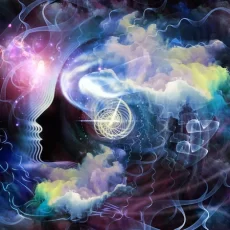Maa Prem Shashin
The Dhauladhar range is visible from the balcony of the pucca home in the village that I regularly visit. Its located near Dharamsala in the foothills of the range of the Himalayas in Kangra, Himachal Pradesh, India. Sitting in the balcony in 2008, one saw a tall cook pine tree, cluster of bamboo trees, and few single story houses sparsely dotting the non-tarred road. Gentle trickle of the downstream was heard when the villagers were asleep in the afternoon and at night. Few modern vehicles plied on the kuccha rasta. Years later now, 4-wheel traffic frequents the tarred road near the thicker bamboo cluster amidst several new and old houses. Distances between these houses has reduced as more now have additional floors as water gurgle is audible only in the rainy season.
Change has set in, not only in this village but across countries. Happy Ho organizes best Meditation and Tarot classes in Noida and Delhi NCR area in India.
The Himalayan ranges span across India, Afghanistan, Pakistan, China, Nepal, and Bhutan and house the highest peak in Mount Everest and house the world’s third largest deposits of ice and snow. The other two larger international bodies are in the Antarctica and the Arctic. Spread across 1,500 miles, these rugged mountains are the dream of all mountaineers.
Over a billion people living in these countries worship these mountains. There are references to Kailash mountains, believed to be Lord Shiva’s and Ma Parvati’s abode, in the Indian Himalayas. Millions of Hindus yearn to do this pilgrimage. The human body to them is a microcosmic form of the Pramatma divine that represents the entire creation, all the beings in the universe. Hindu scriptures view each body in multiple forms: as the living abode of God; a personification of Prakriti Nature; a temple of the eternal atman soul; Nature and so on.
Yet according to a recent report, glaciers in the remote Himalayan areas have lost billions of tons of ice. especially so during 2000 and 2016. Rising temperatures, a critical global issue, cause ice loss intimidating water supplies to over 30% of Asian population living downstream across considerable parts of Asia. This comprises to about 20% of the world population. Based on data gathered from ground stations, it is reported that temperatures in the ranges have shot up by one degree Celsius. Researchers worked on the extent of expected glacial meltdown due to warmer temperatures to confirm that one degree was undeniably adequate to result in such a gigantic loss of glacier ice.
Meanwhile, of the 197 parties to the Convention, the Indian government is among the 185 which have ratified the Paris agreement. India is committed to plan for reduction of the emissions intensity of its GDP by 33 to 35 percent by the year 2030 and to collaboratively solve the global climate crises.
Apart from reasonable domestic resources to implement this plan through 2030, India will need at least $2.5 trillion as well as technology transfer (support of skills and equipment) from the more-developed countries. This includes ‘international finance assistance from the Green Climate Fund (a program designed to assist in low-emission technologies and climate-resilient development)’.
Signatories of the Paris Agreement have a long-term goal of maintaining average warming below 2 degrees Celsius, and pursuing efforts to limit it to 1.5 degrees. This is the major focus of developing countries that are even more vulnerable to climate impacts. Additionally, each signatory shall mitigate the climate crises with the ‘prescribed set of binding procedural commitments: to “prepare, communicate and maintain” an NDC (Nationally determined contributions); to share necessary data for clarity and transparency; and to communicate revised input every five years’. NDCs, the soul of this Agreement, indicate efforts of each country toward reduction of national emissions and adaptation to the impacts of climate change. Nations shall raise their ability to bear the hostile impacts of climate change and to nurture climate resilience and greenhouse gas emissions, without threatening agricultural production.
Implementation of the core mitigation commitments are common to all parties. But ‘developed countries should continue to lead by undertaking absolute economy-wide reduction targets’, while developing countries ‘are encouraged to move toward economy-wide targets’ over years in relation to national conditions.
No wonder, eco anxiety in people is high globally. People have ‘a mix of confused feelings, including depression, grief, rage, despair, hopelessness, guilt and shame. All of these feelings come with it’ according to Carline Hickman, a member of the Climate Psychology Alliance, Plymouth University, UK. With ‘conflicting feelings’, many suffer from the ‘chronic fear of environmental doom’ of calamity, mass destruction because the governments of not all countries are trying to mitigate the risks of climate change.
Temperatures are likely to rise by at least 3 degrees by the end of this century. Scientists say if we wish to improve our mental state of being then we must commit to conscious emissions restriction. Social activists, researchers, and scientists scream about the need to restore the planet’s health. Academicians, corporations, bodies are not missing a note on this even as individuals make motley, small but critical contribution to this drive. Students across 100 plus countries went on weekly strikes, demanding for political action on the climate emergency. Their complaint: adults have really not done enough to save the planet and the impact of climate change will only worsen by the time they grow up. Their demands: definite action by nations, clear government policies addressing climate change and climate justice issues, scientifically precise climate change forecasts by government for right decision-making, and inclusion of the subject in educational curricula from early school to raise awareness in younger children.
For sure, we cannot remain strangers to environmental issues. Many forces are searching for solutions. One inexpensive and effective climate change solution, according to a recent study, is forest restoration. It is equally significant to protect existing forests and to phase out fossil fuels because fresh forests would take decades, maybe a century, to mature and reduce carbon dioxide from the atmosphere.
If a trillion trees (approximately one third of the existing forest cover) are planted for picking up nearly 830 billion tons of carbon dioxide from the atmosphere (spread in past 25 years) atmospheric carbon dioxide would reduce by nearly 25 percent. Reforestation would not affect existing cities or agriculture. If global warming is limited to 1.5 degrees Celsius, we may need to recalibrate the reforestation area in two to three decades so that tropical forests do not become unbearable.
How does this work? ‘Trees and all plants use the energy of sunlight. Through the process of photosynthesis, they take carbon dioxide (CO2) from the air and water from the ground. In the process of converting it into wood they release oxygen into the atmosphere’. Additionally, the CO2 that the trees capture helps the soil to capture significant amounts of carbon.
On the other hand, why is it that earnest attempts to making efforts fail? Why did the U.S. threaten to terminate all participation in the 2015 Paris Agreement on climate change mitigation because it undermines the U.S. economy?
Osho says: People change with difficulty; they find it easier to remain as they are – just like stones, like rocks. Change means a determined effort, a commitment to transform your energies, to take your being in an absolutely serious manner.”
Are we aware about our mind’s ability to play games of lies? Do we even understand that the planet reflects our inside, and therefore we must be responsible both towards ourselves and the whole planet? NO. Yet, we must pay for human negligence and certainly do more to save the planet from climate crises and the near-extinction one million species?
Osho says: Man can live joyously only with nature, not against nature…We are part of nature! How can we conquer it? We are nature; to fight with nature is to fight with oneself. It is so foolish and so suicidal that later generations will not be able to believe how man committed such a crime.
Re-sensitisation to nature considering all living beings share the same Earth is essential. Its missing. When the astronauts first space-walked they echoed this insight. They said the “amazingly beautiful ‘blue planet’ does not have any lines defining borders, dividing countries. It’s one world, and we all share it as our home – it’s the only home we’ve got, so we better care for it”.
Like ancient Indian mystics, we must look for insights within ourselves to be able to re-experience oneness with existence and flow again compassionately, more meditatively and lovingly. Osho says: To be in tune with nature is to be religious. My definition of religion is, to be in tune with nature. And that is the meaning of the Indian word Dharma; it means ‘nature’, intrinsic nature. Trust nature and don’t violate it…
Being alert means you have to stop being robots. Change your routines, move more consciously; let every act become an object of awareness. Then even these few years that are left are enough – more than enough. If you put your total energy into transformation, the destruction of the earth will not be your destruction. If you can die consciously, you have found the key to a higher life, to an eternal life, to a divine life.
Change has set in, not only in this village but across countries. Happy Ho organizes best Meditation and Tarot classes in Noida and Delhi NCR area in India.
The Himalayan ranges span across India, Afghanistan, Pakistan, China, Nepal, and Bhutan and house the highest peak in Mount Everest and house the world’s third largest deposits of ice and snow. The other two larger international bodies are in the Antarctica and the Arctic. Spread across 1,500 miles, these rugged mountains are the dream of all mountaineers.
Over a billion people living in these countries worship these mountains. There are references to Kailash mountains, believed to be Lord Shiva’s and Ma Parvati’s abode, in the Indian Himalayas. Millions of Hindus yearn to do this pilgrimage. The human body to them is a microcosmic form of the Pramatma divine that represents the entire creation, all the beings in the universe. Hindu scriptures view each body in multiple forms: as the living abode of God; a personification of Prakriti Nature; a temple of the eternal atman soul; Nature and so on.
Yet according to a recent report, glaciers in the remote Himalayan areas have lost billions of tons of ice. especially so during 2000 and 2016. Rising temperatures, a critical global issue, cause ice loss intimidating water supplies to over 30% of Asian population living downstream across considerable parts of Asia. This comprises to about 20% of the world population. Based on data gathered from ground stations, it is reported that temperatures in the ranges have shot up by one degree Celsius. Researchers worked on the extent of expected glacial meltdown due to warmer temperatures to confirm that one degree was undeniably adequate to result in such a gigantic loss of glacier ice.
Meanwhile, of the 197 parties to the Convention, the Indian government is among the 185 which have ratified the Paris agreement. India is committed to plan for reduction of the emissions intensity of its GDP by 33 to 35 percent by the year 2030 and to collaboratively solve the global climate crises.
Apart from reasonable domestic resources to implement this plan through 2030, India will need at least $2.5 trillion as well as technology transfer (support of skills and equipment) from the more-developed countries. This includes ‘international finance assistance from the Green Climate Fund (a program designed to assist in low-emission technologies and climate-resilient development)’.
Signatories of the Paris Agreement have a long-term goal of maintaining average warming below 2 degrees Celsius, and pursuing efforts to limit it to 1.5 degrees. This is the major focus of developing countries that are even more vulnerable to climate impacts. Additionally, each signatory shall mitigate the climate crises with the ‘prescribed set of binding procedural commitments: to “prepare, communicate and maintain” an NDC (Nationally determined contributions); to share necessary data for clarity and transparency; and to communicate revised input every five years’. NDCs, the soul of this Agreement, indicate efforts of each country toward reduction of national emissions and adaptation to the impacts of climate change. Nations shall raise their ability to bear the hostile impacts of climate change and to nurture climate resilience and greenhouse gas emissions, without threatening agricultural production.
Implementation of the core mitigation commitments are common to all parties. But ‘developed countries should continue to lead by undertaking absolute economy-wide reduction targets’, while developing countries ‘are encouraged to move toward economy-wide targets’ over years in relation to national conditions.
No wonder, eco anxiety in people is high globally. People have ‘a mix of confused feelings, including depression, grief, rage, despair, hopelessness, guilt and shame. All of these feelings come with it’ according to Carline Hickman, a member of the Climate Psychology Alliance, Plymouth University, UK. With ‘conflicting feelings’, many suffer from the ‘chronic fear of environmental doom’ of calamity, mass destruction because the governments of not all countries are trying to mitigate the risks of climate change.
Temperatures are likely to rise by at least 3 degrees by the end of this century. Scientists say if we wish to improve our mental state of being then we must commit to conscious emissions restriction. Social activists, researchers, and scientists scream about the need to restore the planet’s health. Academicians, corporations, bodies are not missing a note on this even as individuals make motley, small but critical contribution to this drive. Students across 100 plus countries went on weekly strikes, demanding for political action on the climate emergency. Their complaint: adults have really not done enough to save the planet and the impact of climate change will only worsen by the time they grow up. Their demands: definite action by nations, clear government policies addressing climate change and climate justice issues, scientifically precise climate change forecasts by government for right decision-making, and inclusion of the subject in educational curricula from early school to raise awareness in younger children.
For sure, we cannot remain strangers to environmental issues. Many forces are searching for solutions. One inexpensive and effective climate change solution, according to a recent study, is forest restoration. It is equally significant to protect existing forests and to phase out fossil fuels because fresh forests would take decades, maybe a century, to mature and reduce carbon dioxide from the atmosphere.
If a trillion trees (approximately one third of the existing forest cover) are planted for picking up nearly 830 billion tons of carbon dioxide from the atmosphere (spread in past 25 years) atmospheric carbon dioxide would reduce by nearly 25 percent. Reforestation would not affect existing cities or agriculture. If global warming is limited to 1.5 degrees Celsius, we may need to recalibrate the reforestation area in two to three decades so that tropical forests do not become unbearable.
How does this work? ‘Trees and all plants use the energy of sunlight. Through the process of photosynthesis, they take carbon dioxide (CO2) from the air and water from the ground. In the process of converting it into wood they release oxygen into the atmosphere’. Additionally, the CO2 that the trees capture helps the soil to capture significant amounts of carbon.
On the other hand, why is it that earnest attempts to making efforts fail? Why did the U.S. threaten to terminate all participation in the 2015 Paris Agreement on climate change mitigation because it undermines the U.S. economy?
Osho says: People change with difficulty; they find it easier to remain as they are – just like stones, like rocks. Change means a determined effort, a commitment to transform your energies, to take your being in an absolutely serious manner.”
Are we aware about our mind’s ability to play games of lies? Do we even understand that the planet reflects our inside, and therefore we must be responsible both towards ourselves and the whole planet? NO. Yet, we must pay for human negligence and certainly do more to save the planet from climate crises and the near-extinction one million species?
Osho says: Man can live joyously only with nature, not against nature…We are part of nature! How can we conquer it? We are nature; to fight with nature is to fight with oneself. It is so foolish and so suicidal that later generations will not be able to believe how man committed such a crime.
Re-sensitisation to nature considering all living beings share the same Earth is essential. Its missing. When the astronauts first space-walked they echoed this insight. They said the “amazingly beautiful ‘blue planet’ does not have any lines defining borders, dividing countries. It’s one world, and we all share it as our home – it’s the only home we’ve got, so we better care for it”.
Like ancient Indian mystics, we must look for insights within ourselves to be able to re-experience oneness with existence and flow again compassionately, more meditatively and lovingly. Osho says: To be in tune with nature is to be religious. My definition of religion is, to be in tune with nature. And that is the meaning of the Indian word Dharma; it means ‘nature’, intrinsic nature. Trust nature and don’t violate it…
Being alert means you have to stop being robots. Change your routines, move more consciously; let every act become an object of awareness. Then even these few years that are left are enough – more than enough. If you put your total energy into transformation, the destruction of the earth will not be your destruction. If you can die consciously, you have found the key to a higher life, to an eternal life, to a divine life.
(To read more on re-sensitisation to nature, please check this column




